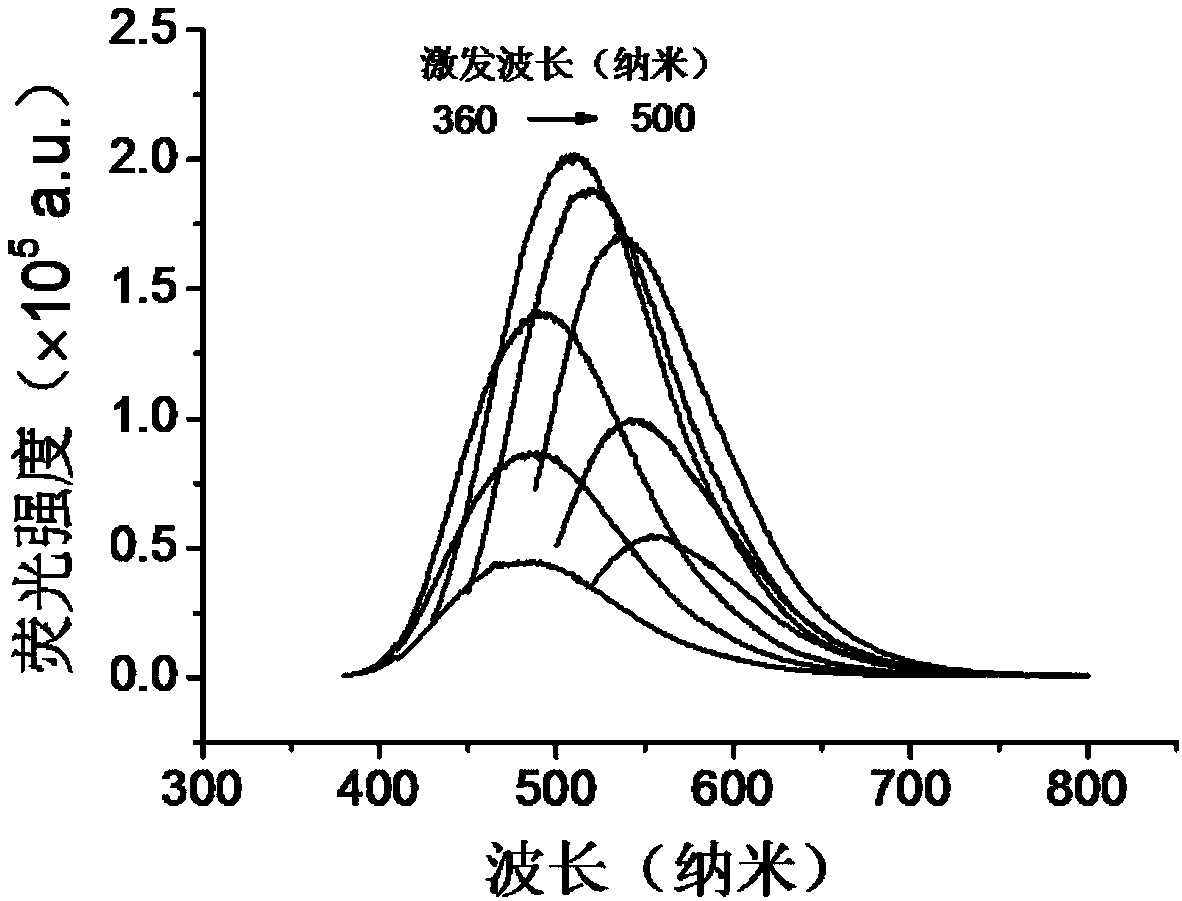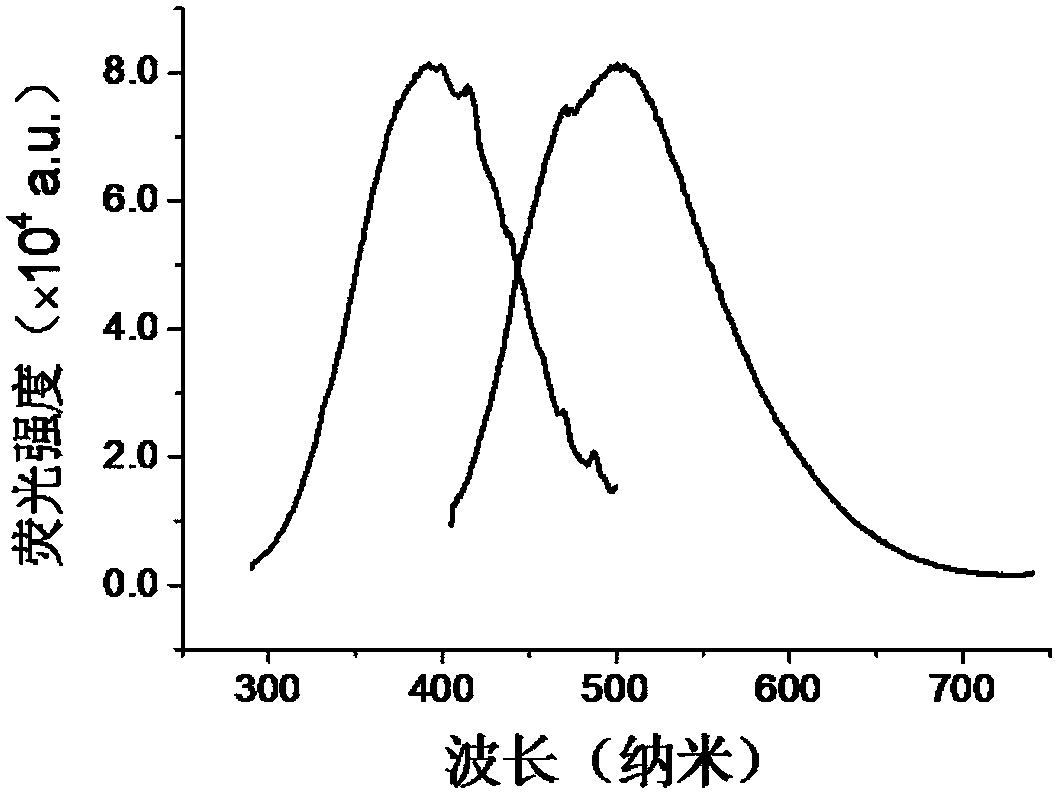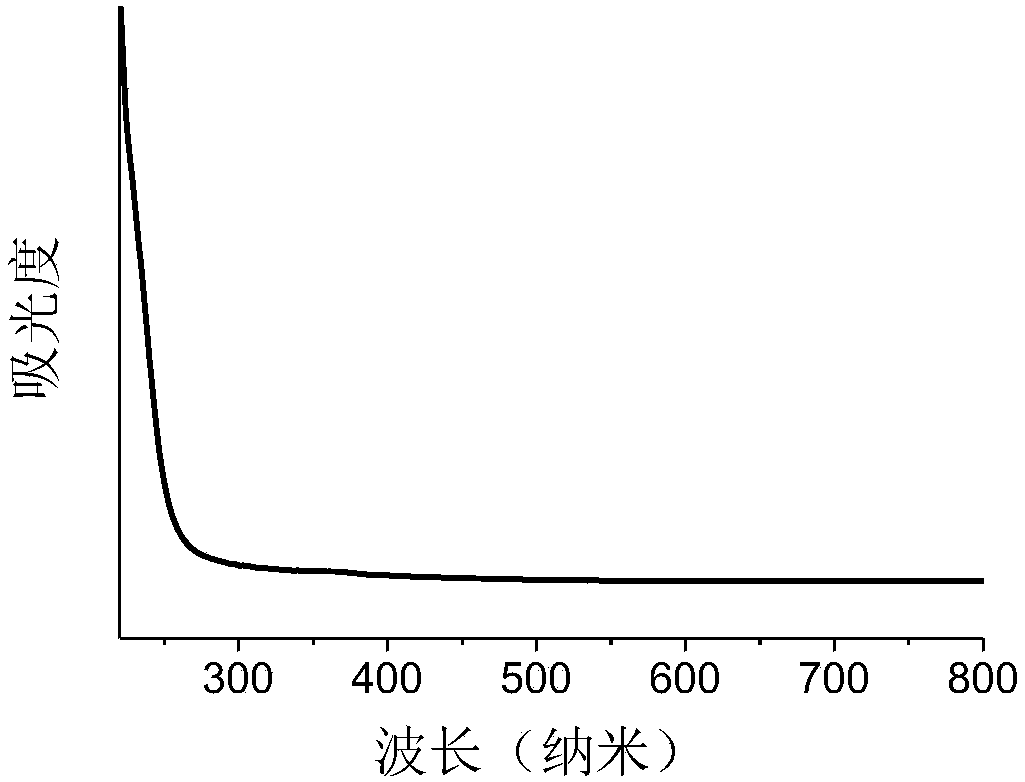Method for detecting alkaline phosphatase activity by molybdenum disulfide quantum dot inner-filter effect fluorescence
A technology of molybdenum disulfide and quantum dots, which is applied in the field of nanomaterials, can solve problems such as less research on optical properties, and achieve the effect of reducing preparation costs and efficient detection
- Summary
- Abstract
- Description
- Claims
- Application Information
AI Technical Summary
Problems solved by technology
Method used
Image
Examples
Embodiment 1
[0038]Embodiment 1, preparation molybdenum disulfide quantum dot
[0039] Dissolve 100 mg of molybdenum disulfide powder and 0.6 g of sodium hydroxide in 11 mL of 85% ethanol / water, sonicate at 580 W for 20 h, let stand at room temperature for 12 h, collect the supernatant, add concentrated hydrochloric acid to adjust the pH of the solution After reaching neutrality, filter to remove insoluble matter, dialyze with a dialysis bag of 1000 KDa for 24 h, then filter through a 0.22 µm microporous membrane, vacuum freeze-dry, and redisperse the obtained solid powder into water to obtain molybdenum disulfide quantum dot solution . like figure 1 and figure 2 As shown, the synthesized molybdenum disulfide quantum dots have tunable luminescence properties, and they can fluoresce under the excitation of 360 nm to 500 nm light, and their maximum excitation and emission wavelengths are 400 nm and 500 nm, respectively. image 3 is the UV spectrum of the synthesized molybdenum disulfide ...
Embodiment 2
[0040] Embodiment 2, prepare molybdenum disulfide quantum dot
[0041] Dissolve 200 mg of molybdenum disulfide powder and 0.8 g of sodium hydroxide in 11 mL of 85% ethanol / water, sonicate at 580 W for 12 h, let stand at room temperature for 12 h, collect the supernatant, add concentrated sulfuric acid to adjust the pH of the solution After reaching neutrality, filter to remove insoluble matter, dialyze with a dialysis bag of 1000 KDa for 24 h, then filter through a 0.22 µm microporous membrane, vacuum freeze-dry, and redisperse the obtained solid powder into water to obtain molybdenum disulfide quantum dot solution .
Embodiment 3
[0042] Embodiment 3, the detection of alkaline phosphatase
[0043] In order to further study the feasibility of detecting alkaline phosphatase by the inner filter effect, we verified it with a fluorescence spectrophotometer. First, we explored the optimal incubation time for detection of ALP. Add an ALP solution with an activity of 5 U / L to a solution containing 1 mM PNPP and 0.1 µM MgSO 4 Molybdenum disulfide quantum dots were incubated in alkaline buffer solution (Tris–HCl, 10 mM, pH = 8.0) at 37°C, and the fluorescence intensity of the solution under excitation at a wavelength of 400 nm was recorded by a fluorescence spectrophotometer every 3 min. Depend on Figure 5 It can be seen that the reaction reached a plateau after 60 min, so 60 min was selected as the optimal incubation time. Second, we explored the linear range of detection of ALP. ALP solutions (0 – 40 U / L) with different activities were added to the solution containing 1 mM PNPP and 0.1 µM MgSO 4 Molybdenu...
PUM
 Login to View More
Login to View More Abstract
Description
Claims
Application Information
 Login to View More
Login to View More - R&D
- Intellectual Property
- Life Sciences
- Materials
- Tech Scout
- Unparalleled Data Quality
- Higher Quality Content
- 60% Fewer Hallucinations
Browse by: Latest US Patents, China's latest patents, Technical Efficacy Thesaurus, Application Domain, Technology Topic, Popular Technical Reports.
© 2025 PatSnap. All rights reserved.Legal|Privacy policy|Modern Slavery Act Transparency Statement|Sitemap|About US| Contact US: help@patsnap.com



